- Home
- Don Pendleton
Toxic Terrain Page 2
Toxic Terrain Read online
Page 2
Then it was her turn to stare into the eyes of the man who’d introduced himself as “Matt Cooper.” When she looked into his icy blue eyes, she felt trust. “At least you weren’t the guy who shot my horse. That’s something, I guess.”
“If it helps, I’ll be as honest as I can about who I am and what I’m doing here,” Bolan said. “You’ve probably figured out that there’s a reason I can’t be more specific. But what I can tell you is that I intend to find out what happened to Rog and Ms. Bowman and hopefully bring them home safely. I have some training and experience in this sort of thing.
“I should also tell you that I know Rog and Bowman were investigating a possible outbreak of BSE,” Bolan continued. “Rog suspected that the prions that cause BSE had in some ways mutated, and that had him worried.”
“So why’d you need me to tell you about that?” Kemp asked.
“You’re not the only one who needs to know who can and can’t be trusted.”
“Do you already know about Ag Con, too?”
“Some. It’s Chinese-owned, but the exact nature of the corporation is a little murky.” He didn’t tell her that Stony Man Farm intelligence indicated Ag Con was controlled by retired officers of the People’s Liberation Army— PLA—and ranking members of the Central Military Commission of the Communist Party of China. Aaron “the Bear” Kurtzman, who headed Stony Man Farm’s team of crack cybersleuths, was helping Bolan on this project. He had become friends with Roger Grevoy and wanted to find out what happened to the man. Kurtzman suspected that some of the Ag Con’s principal owners were part of a secret cabal dedicated to ending China’s drive toward a free-market economy and restoring the country’s former socialist status quo by creating chaos in China’s primary export market: the United States. This was just a suspicion on Kurtzman’s part; since he and his team hadn’t been able to find any substantial evidence about the existence of this cabal. But it was starting to look as though Bolan might have found a solid lead.
Bolan didn’t withhold this because of lack of trust in Kemp—his gut was telling him she was okay, and he tended to take his own advice. He withheld it because at this point it wasn’t solid information but rather innuendo and rumor based on vague suspicion.
“What do you know about me?” Kemp asked.
“You’re thirty-four, you have a doctorate in veterinary medicine from Purdue University, you served six years in the military, where you finished your undergraduate degree and started your doctoral program, you have far too many speeding tickets, and you are the co-owner of Grassy Butte Veterinary Clinic with Ms. Bowman.”
“Anything else?”
“You and Ms. Bowman are lovers.”
“My, you are thorough,” Kemp said. “But not completely up-to-date. We were lovers, not that it’s any of your business. These days Pam and I are just business partners again. She’s got another partner in her personal life.”
“You okay with that?”
“You mean did I kill her in a jealous rage? Who the hell are you again? Wait, I know—Matt Cooper, security consultant. I guess you got me. I busted a cap in both her and Rog’s asses because I couldn’t stand the thought of her with another chick.” She held out her hands. “You might as well cuff me and bring me in.”
Kemp was a tiny woman, maybe five-two in her stockings, tops, but she had an energy that seemed much larger, and Bolan couldn’t help but like the incendiary little brunette. He could see the gold flecks in her green irises start to glow, but she calmed down.
“Sorry if I got a little melodramatic,” she said. “I’m not used to complete strangers regaling me with the sordid details of my love life, especially while I’m standing over the dead body of another stranger who just tried to kill me.”
“About that,” Bolan said. “I suppose we have to call the sheriff. Can we trust him?”
“Jim Buck? Hell, yes, we can trust him—to a point, anyway. I know he’s not working for Ag Con, though he does have to answer to some county commissioners who do. Plus he’s as lazy as they come. He’s not going to be happy with all the paperwork this is going to create.”
“I have to say, you’re taking this dead body thing fairly well.”
Kemp looked down at the corpse. “I put down animals all the time,” she said, “and most of them have never done anything to me. This son of a bitch shot my favorite horse. Please excuse my lack of compassion.”
Watford City, North Dakota
“SHUT THE FUCK UP,” Gordon Gould said to the large man standing in his office. “I’m trying to think.” McKenzie County Sheriff Jim Buck didn’t appreciate being treated in that manner, but Gould, president of the North Dakota Cattle Raisers’ Association—and one of the most powerful men in the state—could make Jim Buck’s life a living hell.
After he’d digested the information Buck had given him, Gould said, “Tell me again what happened.”
“Apparently one of those guys Ag Con brought in from out of state went ape shit and tried to shoot Kristen Kemp and some dude named Cooper up north of Beicegel Creek Road, just east of the Little Missouri River.”
“So how come the guy from Ag Con is dead instead of that woman or her friend?”
“I guess he missed and shot Kemp’s horse,” Buck said.
“So you’re just taking her word for this?” Gould said.
“Her word and the word of Cooper, the guy who was with her.”
“Who the fuck is he?”
“I checked him out. He’s a retired Marine, lists his current occupation as ‘security consultant.’ Seems to have some pull with Justice and his record’s spotless.” As usual, Kurtzman had done an outstanding job setting up Bolan’s cover identity.
“Besides,” Buck said, “all the evidence backs up their story. The Ag Con guy fired four shots into the wooded draw where Kemp and Cooper were riding their horses. He was either poaching and thought the horses were elk, in which case he was even blinder than he was stupid, or the man was trying to kill them, which is what I’d say it looks like he was trying to do.”
“You’re going to write it up as an accident,” Gould said.
“What the hell are you talking about?” Buck asked.
“I said you’re going to write it up as an accident. The man was out poaching, mistook the horses for elk and forced Cooper to return fire.”
“I’ll do no such thing. That’s pure bullshit, and you know it.”
“I also know that I have evidence that Linda’s been stealing meth from the evidence room and selling it to support her casino habit.”
“You’re full of shit.” Linda was Buck’s wife. The sheriff knew she had a gambling problem, but he couldn’t believe she’d sink that low.
“I figured you’d see it that way,” Gould said and pulled a remote control from his desk drawer. A large LCD monitor on the wall beeped and came to life. “In case you get any ideas, I burned these disks from the originals, which are now in the possession of my lawyer. Watch.”
He hit Play and a grainy image of Linda Buck appeared on the screen. The DVD was obviously taken with the security camera in the sheriff department’s evidence room. Buck watched as his wife, who happened to be the legal secretary for the county attorney, walked into the room and removed a package containing at least an ounce of meth. Gould stopped the DVD, and Buck heard the tray in the multidisk DVD player rotate. Gould hit Play again, and once more Linda appeared on screen. This time the camera appeared to be at a low angle in the cab of a pickup truck. The wide-angle lens showed Linda handing the package of meth to a fellow Buck recognized as Gould’s nephew, Jason. In return the nephew handed her a large envelope. Linda pulled a large stack of bills from the envelope and counted them. She was an attractive woman, in spite of her 1970s-era Farrah Fawcett hairdo. When she finished counting the money, Jason said something Buck couldn’t quite make out and then started to unzip his pants. Once he’d exposed himself, Linda moved toward his lap.
“Do you want to see the rest?” Gould asked.
“I’ve seen enough,” Buck said and Gould stopped the DVD.
“Isn’t that the mother of your children?” Gould asked.
Buck didn’t respond. He had his head in his hands and his shoulders shook. The sheriff was crying.
“Look,” Gould said. “I know you feel like killing me. I know you feel like killing her. But where will your kids be if their mamma’s dead and their daddy’s in prison for killing her? Don’t be mad at her. Gambling is a powerful addiction. Wouldn’t it just be easier to fill out the report the way I tell you to fill it out? Take care of this issue for me, then you get her the help she needs. I’ll even pay for it.”
WHEN BOLAN WAS four miles from Ag Con’s main complex in Trotters, North Dakota, he tethered his horse to a juniper in a deep wash where the animal wouldn’t be seen unless an aircraft flew directly over it. The satellite intel he’d received from Stony Man Farm had been sketchy—there weren’t a lot of satellites readily available to look at this remote part of the world, since it wasn’t exactly a high-priority hot spot for any of the world’s intelligence agencies—but from what he’d seen, the complex, which consisted of corrugated-steel pole buildings and an old ranch house that had been converted into office space, as well as a few barns and other outbuildings left over from the complex’s previous life as a working ranch, appeared to be patrolled by armed guards.
Bolan was armed with his rifle, which he wore from a three-point sling so he could access it while riding, as well as his .44 Magnum Desert Eagle and his silenced Beretta 93-R machine pistol. But this was a soft probe, and Bolan had no intention of shedding any blood on this excursion. Even though he didn’t buy the sheriff’s conclusion about that morning’s shooting being an accident, he had no hard evidence that the shooter had been acting on orders from his employer. The Executioner had no qualms about doling out judgment on the guilty, but he drew the line at murdering the innocent, and the Ag Con employees were innocent until he knew for certain that was not the case.
When he was within one thousand yards of the complex, he made his way to the top of the highest butte he could find. It was mid-July and most of the accessible grass had been grazed by this time of year, but not even the heartiest Badlands cattle could have made their way up the steep slopes of the butte. The grass at the top, though sparse, was tall and provided good cover. Bolan crawled through the grass to the edge of the butte nearest the compound and scanned the complex with a pair of 18-power binoculars that were the next best thing to being there. He identified four men carrying rifles patrolling the perimeter on quads. Inside the fence he counted at least four more armed patrols on the ground. An old hip-roof barn appeared to have been converted into office space or sleeping quarters; its windows had been recently replaced, and an industrial-size air-conditioning unit cooled the building. Bolan noted that there was an additional window-style air-conditioning unit mounted in the oversize cupola atop the barn. On closer examination, Bolan saw that the cupola was air-conditioned for the comfort of the armed guard posted inside. Several other armed guards were stationed around the barn itself.
The level of security was nothing short of bizarre. Most cattle operations in the area needed only the security of a big dog or perhaps some alpacas to keep coyotes and other predators away from the calves. Even though the Little Missouri National Grasslands—a chunk of land that covered more than a million acres in western North Dakota—was all open-grazing, meaning the cattle roamed on more or less free range, most ranchers kept their herds together and they knew one another’s brands and tags. The closest anyone ever got to rustling was when a stray animal accidentally ended up in someone else’s herd, and those situations were usually solved with no hard feelings. Though most people out here carried at least one firearm at all times, and often two, that had more to do with the chance of running into a rattlesnake or buffalo that had strayed from Theodore Roosevelt National Park, or a rogue Angus or Hereford, than with fear of humans.
A Bell 210 helicopter flew over the river and landed in the complex just as the sun sank below the western horizon. Except for the yellow-and-red “Ag Con” decal on its side, the 210 was painted flat black. The first helicopter had barely landed when a second came in from the north. Again, while unusual, Ag Con’s flying a couple of helicopters out here wasn’t unreasonable. The company ran twenty thousand head of cattle in a range that covered over more than sixteen hundred square miles. It would be a challenge to cover it all on ATVs and horses.
But the men wearing full battle gear inside the helicopters were a little harder to explain. Bolan had a hard time imagining a legitimate use for the grenade launchers mounted beneath their QBZ Type 97 assault rifles. Grenades weren’t the most useful tools for rounding up cattle or mending fences. The rifles themselves, modern bullpup-style weapons, with their grenade launchers poking out from under their barrels, looked as out of place in the Western landscape. Not to mention that the Type 97 had never been legally imported into the United States.
Several other men came out of the guarded barn dragging something that eliminated any doubts Bolan might have still harbored regarding the nature of the Ag Con operation—two figures, a male and a female, both with their hands and feet zip-tied together and black hoods draped over their heads. They had to be Pam Bowman and Roger Grevoy. Seeing the two captives was all the evidence Bolan needed to turn this into a shooting war.
Though he was well-armed, the Executioner could see no way to turn this soft probe hard without endangering the captives. Bolan had taken on more people than were guarding the compound and lived to tell about it, but if he started shooting now, there was no way he could take out all the enemy before they executed Bowman and Grevoy.
He watched as the prisoners were loaded onto one of the helicopters and flown from the compound. The Bell had a maximum range of 225 nautical miles, but since it hadn’t refueled, its destination was likely much less than that. The helicopter headed northeast and was soon followed by the second helicopter. There was no cell phone service this far into the Badlands, but Bolan had brought a satellite phone in case he needed some help from Stony Man. Bolan punched in Kurtzman’s secure number, but before he heard the big man’s gruff voice answer, he felt a gun barrel touch the back of his head.
“Put down the phone,” a voice behind him said.
Bolan, still in a prone position, started to put the phone down in an exaggerated slow-motion movement. Hoping that the man’s attention was on his arm, the soldier swept his leg around behind him where he estimated the man would be standing. His calf hooking around the other man’s leg told the soldier that he had guessed correctly, and the man fell to the ground. Bolan felt the barrel of the gun slide away from the back of his head at the same time he felt the man fall. The man squeezed the trigger an instant after the tip of the barrel left the back of Bolan’s scalp and he felt a hot line sear across the back of his head. The bullet didn’t hit him with enough force to cause any concussive damage, but the report from the rifle deafened the soldier—all he could hear was loud ringing.
But he didn’t have time to worry about any permanent hearing loss. He flipped upright and drew his Desert Eagle before the man hit the ground. There was no point bothering with the silenced Beretta, since the soft probe had already gone hard. Bolan aimed and fired. The big 240-grain bullet put a crater the size of a walnut in the man’s forehead and took half his skull with it on the way out.
Bolan still couldn’t hear anything but ringing, but he knew the bad guys would be coming at him in force. He rolled back over and scanned the compound. By this time the sun had gone below the horizon, so he turned on the FLIR thermal imaging sight he’d mounted on the DPMS rifle. Sure enough, all four ATV riders were headed his way, as were a number of foot patrols from inside the compound. Bolan fired a shot at the ATV rider nearest the butte, hitting him in the gap between his full-coverage helmet and the chest protector of his motocross body armor. The .260 round would easily punch through the ABS plastic of the man�
�s riding gear, but Bolan, who was used to fighting foes wearing antiballistic body armor rather than protective riding gear, instinctively aimed for open flesh. His shot was dead-on and a gaping wound opened in the man’s trachea. The bullet sheared the man’s spine just below the base of the skull, and he tumbled from his vehicle.
Before the man hit the ground, Bolan had already fired on the ATV rider who was next in line. He didn’t have a clear shot at the man’s neck, so he punched a round through the man’s goggles.
The two ATV riders who were behind their fallen comrades both reacted in different ways. The rider who was farther back stopped and tried to get behind his vehicle for cover, while the closer rider opened up his throttle and came bouncing toward Bolan at top speed. The soldier put a round right into the armpit of the man who was clambering off his ATV, and the guy fell from sight. Then Bolan targeted the rider coming at him on the ATV. It took two shots to stop him. Since he was so close to the butte, Bolan had to shoot almost straight down at him, taking him out with a shot through the top of his helmet.
All of this took place in a matter of seconds, but it was long enough for the shooter in the cupola atop the barn to start firing at Bolan’s position. Bullets started knocking up chunks of dirt all around the Executioner, and at least a dozen armed men had left the compound and were running toward him. Bolan scooped up the sat phone, scrambled back to the far edge of the butte and leaped over the edge, half falling, half running down the steep embankment. When he reached the bottom he ran toward his horse. He knew the terrain would be too rough for anything but foot travel or horseback, so he ran at top speed through the bottoms of the maze of washes and gullies that made up the Badlands, knowing that he could keep ahead of the Ag Con goons.
The ringing in Bolan’s ears had finally subsided. He regained his hearing just in time; voices in the brush ahead told Bolan that he also had to worry about what was in front of him as well as what was coming up behind. He could make out two distinct voices speaking with each other in the far end of the wash. He was still a good mile from his horse.

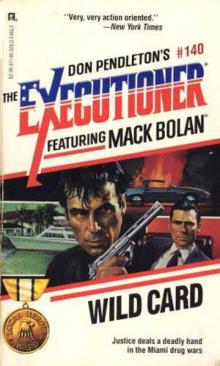 Wild Card
Wild Card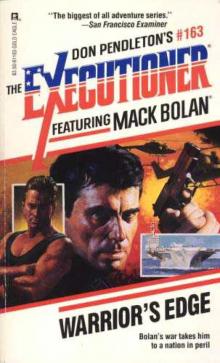 Warrior's Edge
Warrior's Edge Blood Vortex
Blood Vortex Lethal Vengeance
Lethal Vengeance Killing Kings
Killing Kings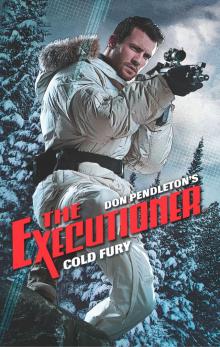 Cold Fury
Cold Fury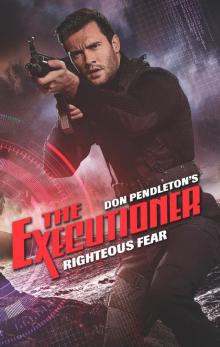 Righteous Fear
Righteous Fear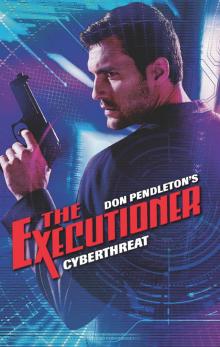 Cyberthreat
Cyberthreat Stealth Assassin
Stealth Assassin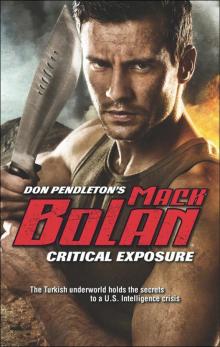 Critical Exposure
Critical Exposure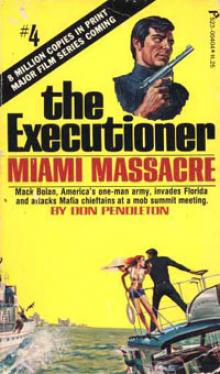 Miami Massacre te-4
Miami Massacre te-4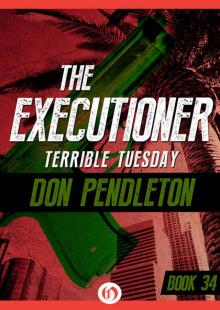 Terrible Tuesday
Terrible Tuesday Dying Art
Dying Art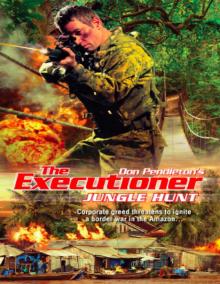 Jungle Hunt
Jungle Hunt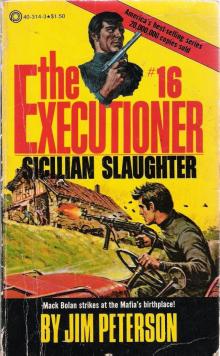 Sicilian Slaughter
Sicilian Slaughter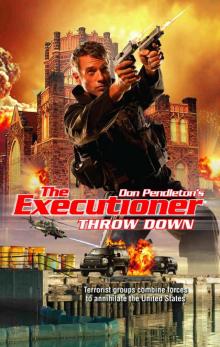 Throw Down
Throw Down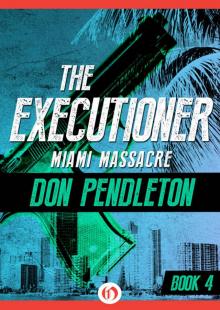 Miami Massacre
Miami Massacre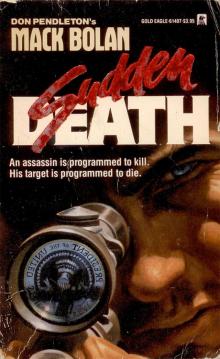 Sudden Death
Sudden Death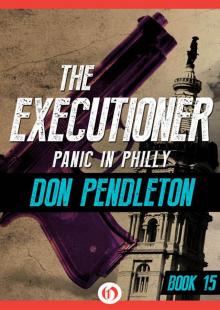 Panic in Philly
Panic in Philly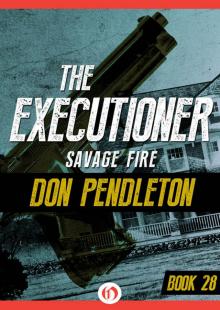 Savage Fire
Savage Fire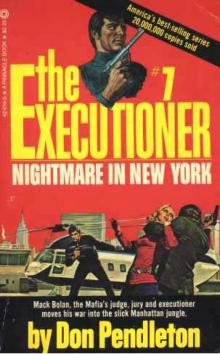 Nightmare in New York te-7
Nightmare in New York te-7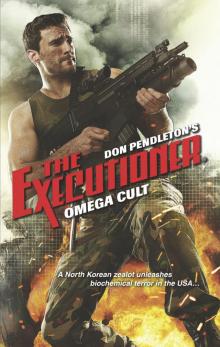 Omega Cult
Omega Cult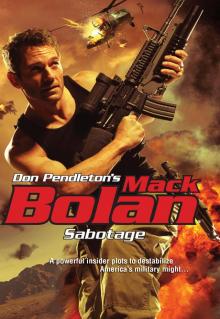 Sabotage
Sabotage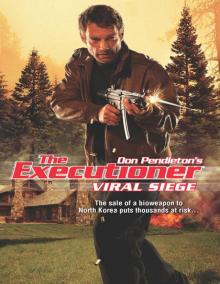 Viral Siege
Viral Siege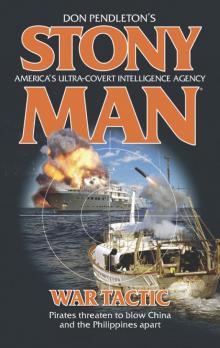 War Tactic
War Tactic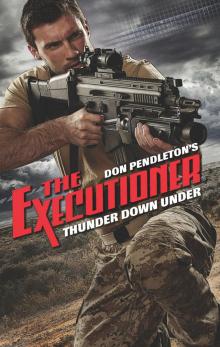 Thunder Down Under
Thunder Down Under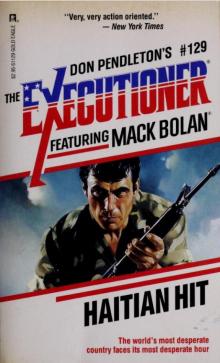 Haitian Hit
Haitian Hit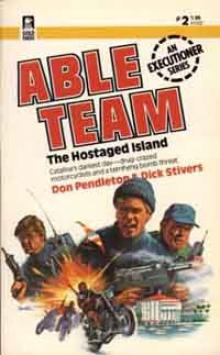 The Hostaged Island at-2
The Hostaged Island at-2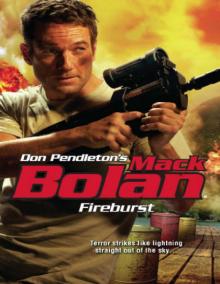 Fireburst
Fireburst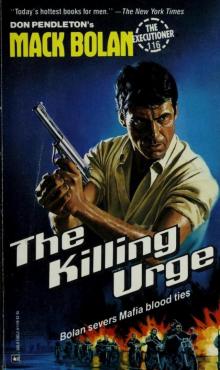 The Killing Urge
The Killing Urge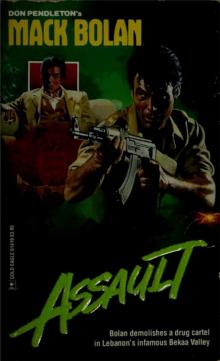 Assault
Assault Ashes To Ashes: Ashton Ford, Psychic Detective
Ashes To Ashes: Ashton Ford, Psychic Detective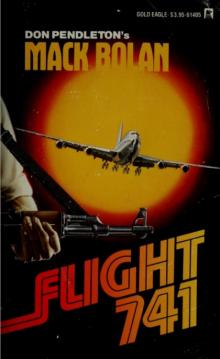 Flight 741
Flight 741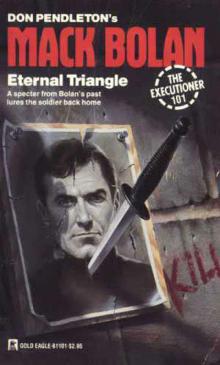 Eternal Triangle
Eternal Triangle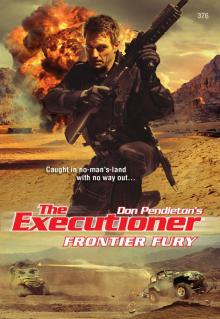 Frontier Fury
Frontier Fury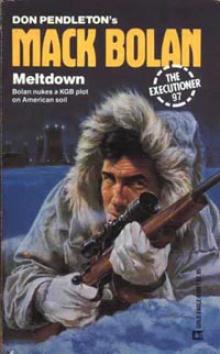 Meltdown te-97
Meltdown te-97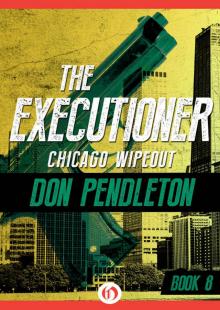 Chicago Wipeout
Chicago Wipeout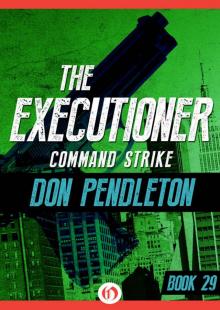 Command Strike
Command Strike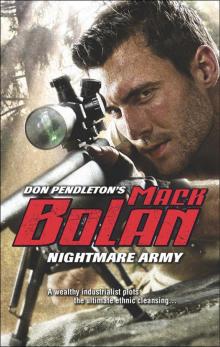 Nightmare Army
Nightmare Army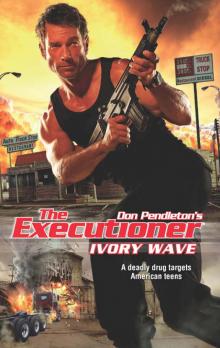 Ivory Wave
Ivory Wave Combat Machines
Combat Machines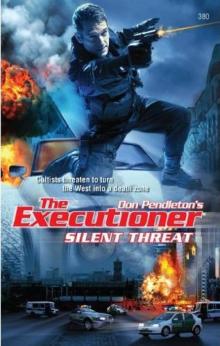 Silent Threat
Silent Threat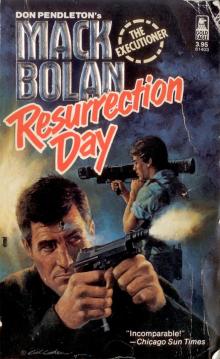 Resurrection Day
Resurrection Day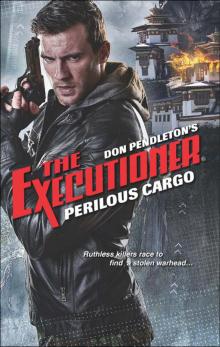 Perilous Cargo
Perilous Cargo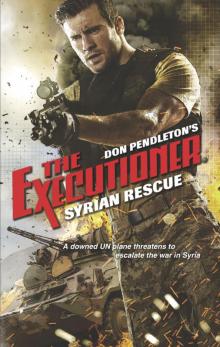 Syrian Rescue
Syrian Rescue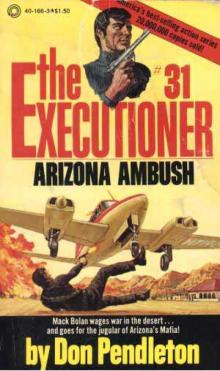 Arizona Ambush te-31
Arizona Ambush te-31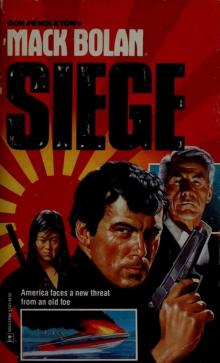 Siege
Siege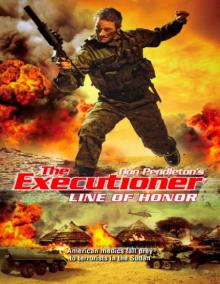 Line of Honor
Line of Honor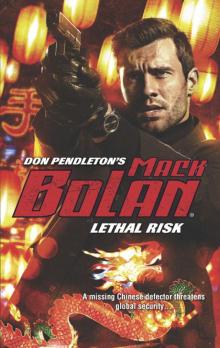 Lethal Risk
Lethal Risk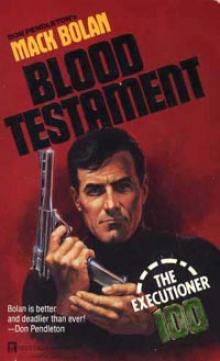 Blood Testament te-100
Blood Testament te-100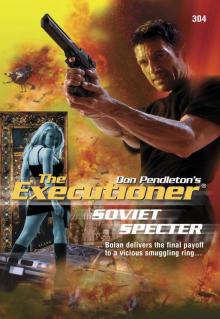 Soviet Specter
Soviet Specter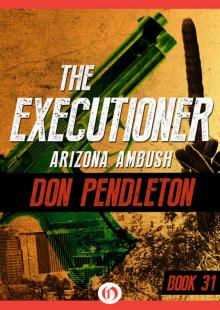 Arizona Ambush
Arizona Ambush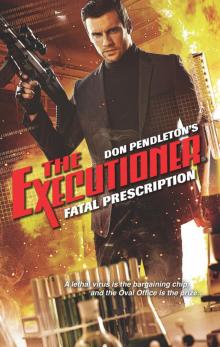 Fatal Prescription
Fatal Prescription Deep Recon
Deep Recon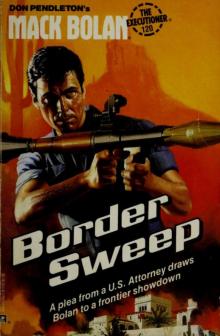 Border Sweep
Border Sweep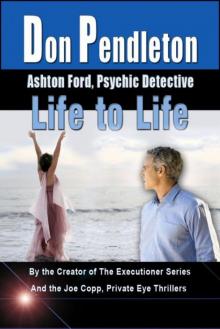 Life to Life
Life to Life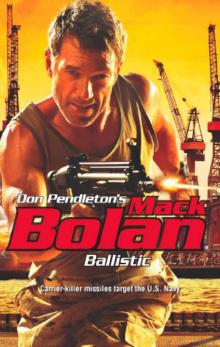 Ballistic
Ballistic Hellbinder
Hellbinder Time to Time: Ashton Ford, Psychic Detective (Ashton Ford Series Book 6)
Time to Time: Ashton Ford, Psychic Detective (Ashton Ford Series Book 6)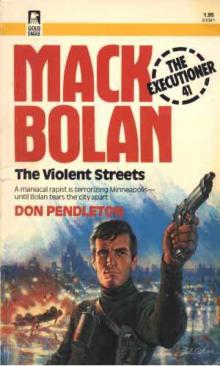 The Violent Streets te-41
The Violent Streets te-41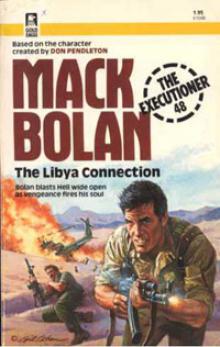 The Libya Connection te-48
The Libya Connection te-48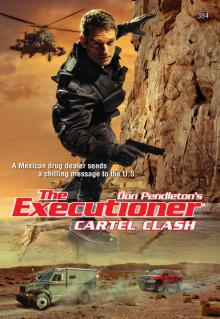 Cartel Clash
Cartel Clash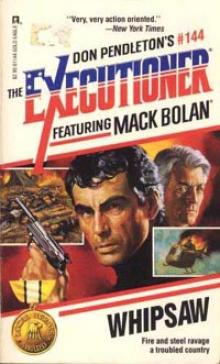 Whipsaw te-144
Whipsaw te-144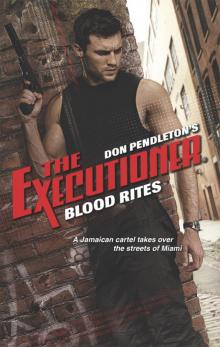 Blood Rites
Blood Rites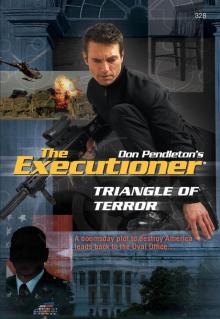 Triangle of Terror
Triangle of Terror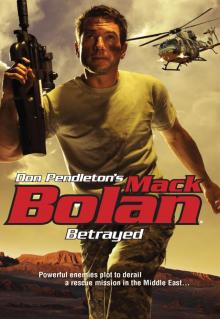 Betrayed
Betrayed San Diego Siege
San Diego Siege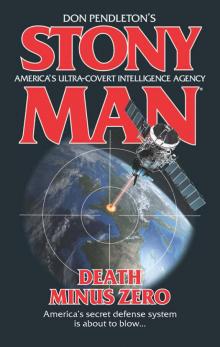 Death Minus Zero
Death Minus Zero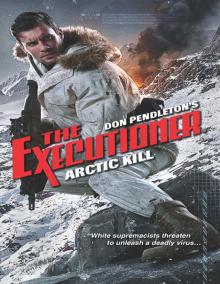 Arctic Kill
Arctic Kill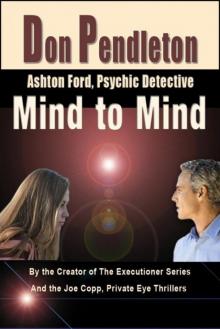 Mind to Mind: Ashton Ford, Psychic Detective
Mind to Mind: Ashton Ford, Psychic Detective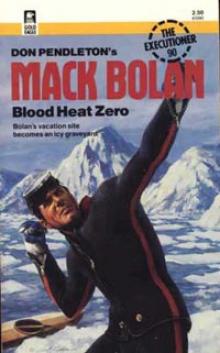 Blood Heat Zero te-90
Blood Heat Zero te-90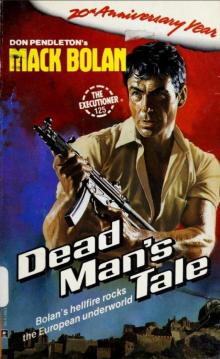 Dead Man's Tale
Dead Man's Tale Sunscream te-85
Sunscream te-85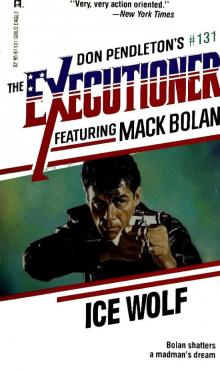 Ice Wolf
Ice Wolf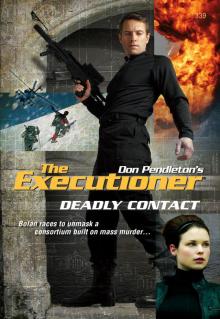 Deadly Contact
Deadly Contact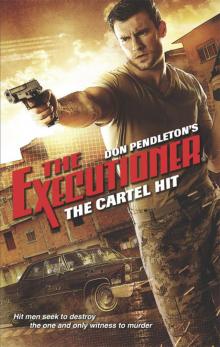 The Cartel Hit
The Cartel Hit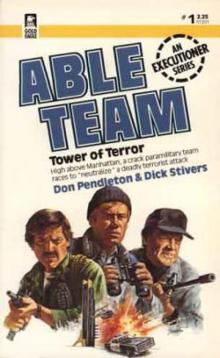 Tower of Terror at-1
Tower of Terror at-1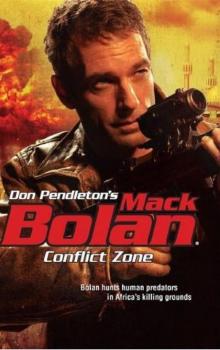 Conflict Zone
Conflict Zone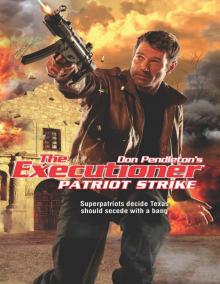 Patriot Strike
Patriot Strike Point Blank
Point Blank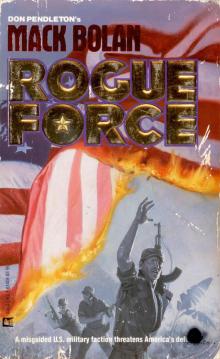 Rogue Force
Rogue Force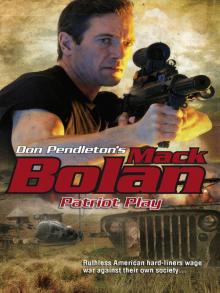 Patriot Play
Patriot Play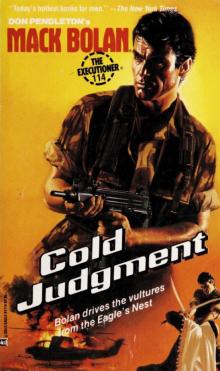 Cold Judgment
Cold Judgment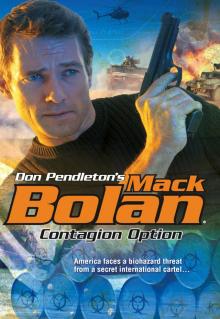 Contagion Option
Contagion Option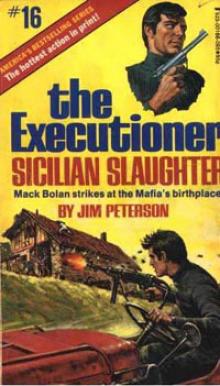 Sicilian Slaughter te-16
Sicilian Slaughter te-16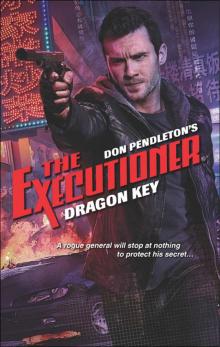 Dragon Key
Dragon Key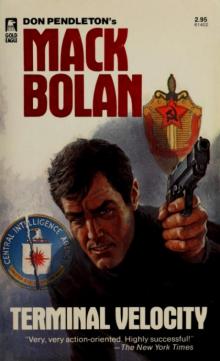 Terminal Velocity
Terminal Velocity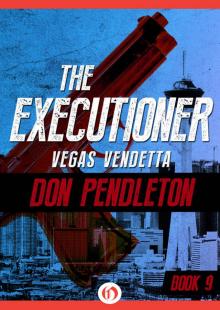 Vegas Vendetta
Vegas Vendetta Ashes To Ashes
Ashes To Ashes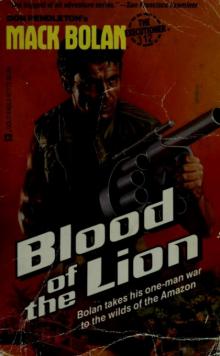 Blood of the Lion
Blood of the Lion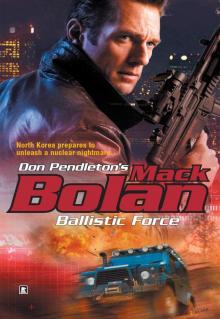 Ballistic Force
Ballistic Force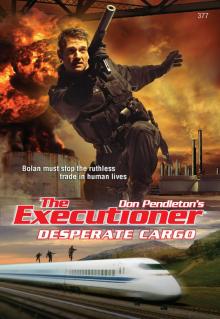 Desperate Cargo
Desperate Cargo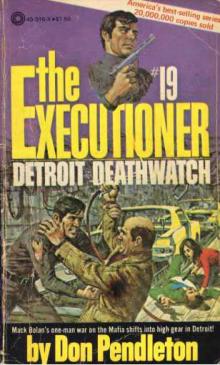 Detroit Deathwatch te-19
Detroit Deathwatch te-19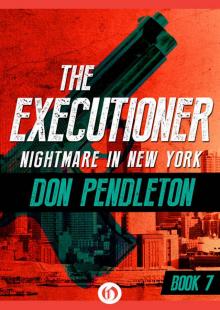 Nightmare in New York
Nightmare in New York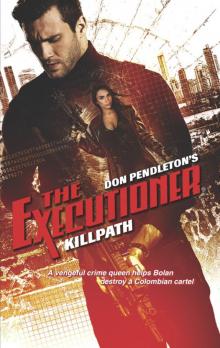 Killpath
Killpath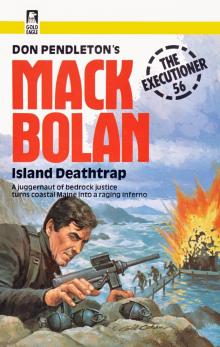 Executioner 056 - Island Deathtrap
Executioner 056 - Island Deathtrap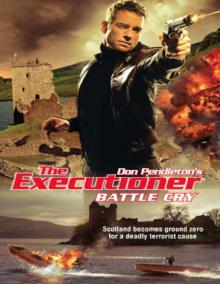 Battle Cry
Battle Cry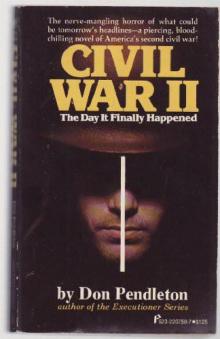 Don Pendleton - Civil War II
Don Pendleton - Civil War II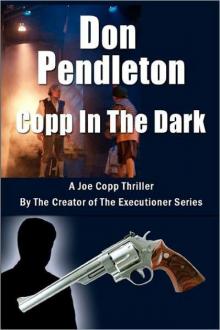 Copp In The Dark, A Joe Copp Thriller (Joe Copp Private Eye Series)
Copp In The Dark, A Joe Copp Thriller (Joe Copp Private Eye Series) China Crisis (Stony Man)
China Crisis (Stony Man)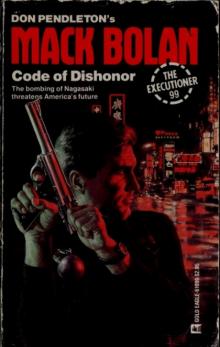 Code of Dishonor
Code of Dishonor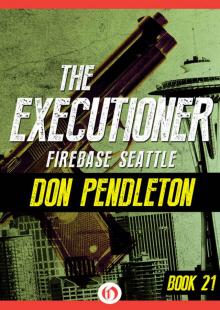 Firebase Seattle
Firebase Seattle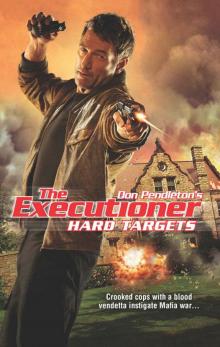 Hard Targets
Hard Targets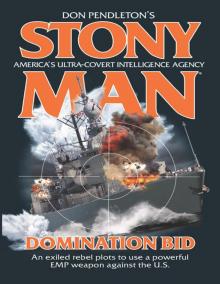 Domination Bid
Domination Bid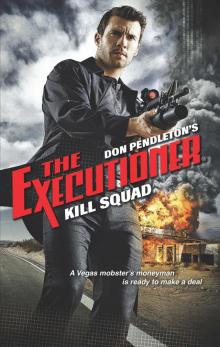 Kill Squad
Kill Squad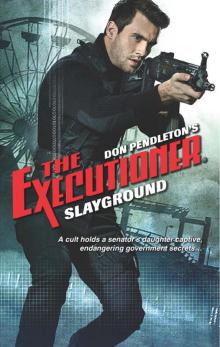 Slayground
Slayground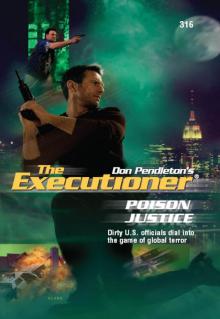 Poison Justice
Poison Justice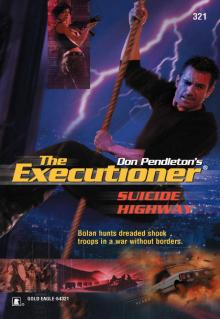 Suicide Highway
Suicide Highway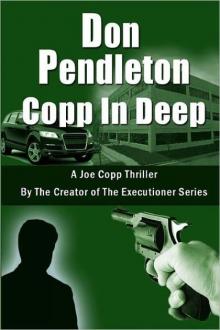 Copp In Deep, A Joe Copp Thriller (Joe Copp Private Eye Series)
Copp In Deep, A Joe Copp Thriller (Joe Copp Private Eye Series)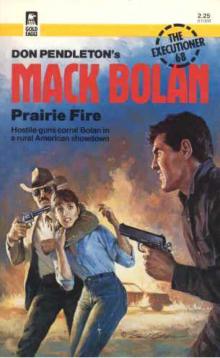 Prairie Fire
Prairie Fire Ninja Assault
Ninja Assault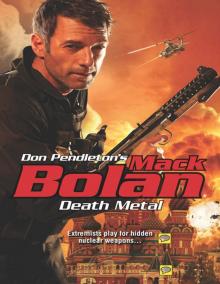 Death Metal
Death Metal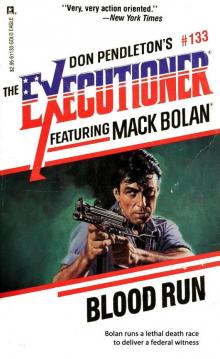 Blood Run
Blood Run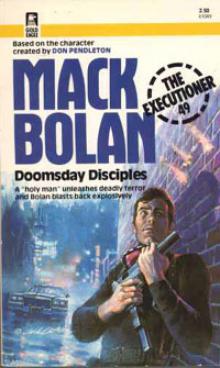 Doomsday Disciples te-49
Doomsday Disciples te-49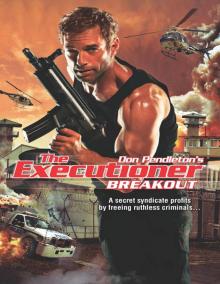 Breakout
Breakout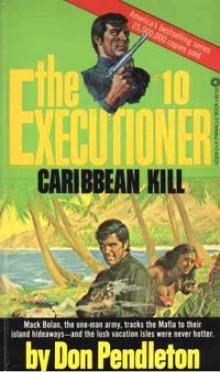 Caribbean Kill te-10
Caribbean Kill te-10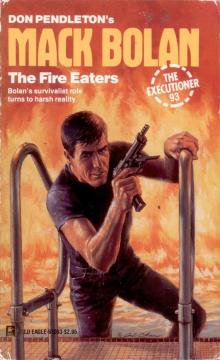 Fire Eaters
Fire Eaters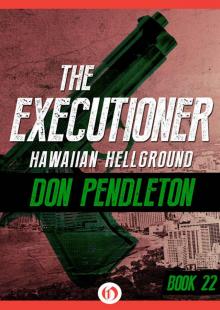 Hawaiian Hellground
Hawaiian Hellground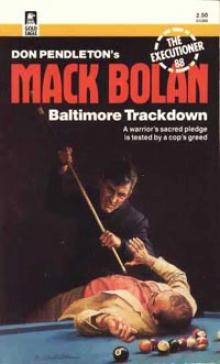 Baltimore Trackdown te-88
Baltimore Trackdown te-88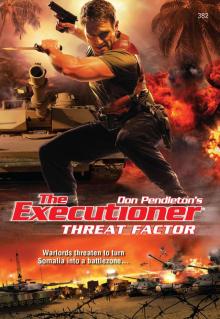 Threat Factor
Threat Factor Don Pendleton's Science Fiction Collection, 3 Books Box Set, (The Guns of Terra 10; The Godmakers; The Olympians)
Don Pendleton's Science Fiction Collection, 3 Books Box Set, (The Guns of Terra 10; The Godmakers; The Olympians)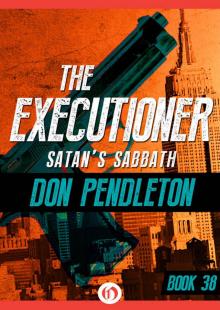 Satan’s Sabbath
Satan’s Sabbath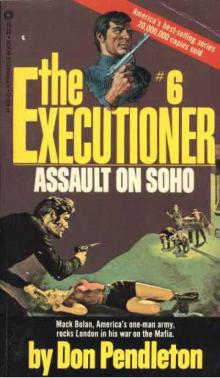 Assault on Soho te-6
Assault on Soho te-6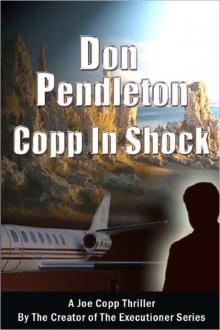 Copp In Shock, A Joe Copp Thriller (Joe Copp Private Eye Series)
Copp In Shock, A Joe Copp Thriller (Joe Copp Private Eye Series)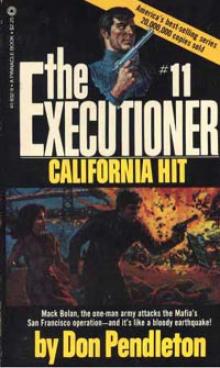 California Hit te-11
California Hit te-11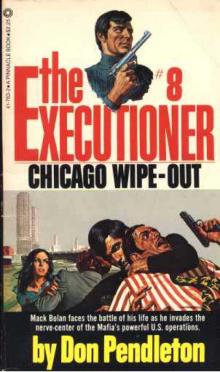 Chicago Wipe-Out te-8
Chicago Wipe-Out te-8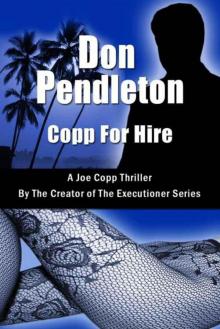 Copp For Hire, A Joe Copp Thriller (Joe Copp Private Eye Series)
Copp For Hire, A Joe Copp Thriller (Joe Copp Private Eye Series)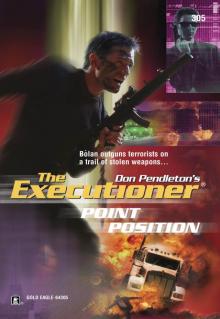 Point Position
Point Position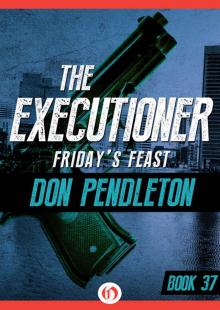 Friday’s Feast
Friday’s Feast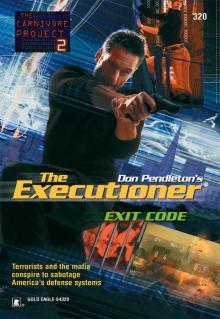 Exit Code
Exit Code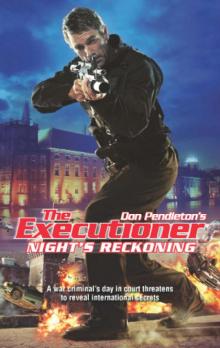 Night's Reckoning
Night's Reckoning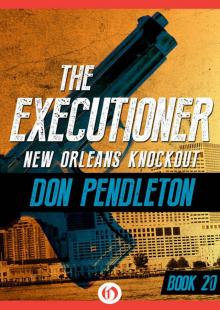 New Orleans Knockout
New Orleans Knockout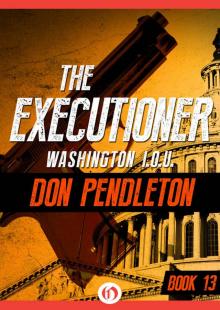 Washington I.O.U.
Washington I.O.U.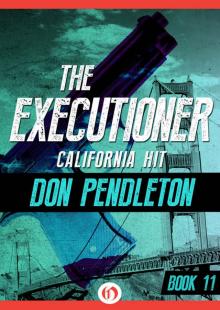 California Hit
California Hit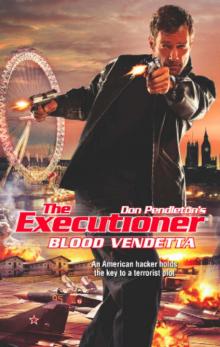 Blood Vendetta
Blood Vendetta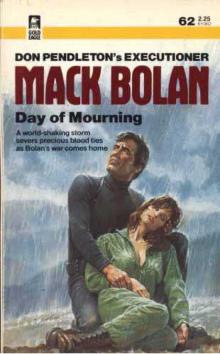 Day of Mourning te-62
Day of Mourning te-62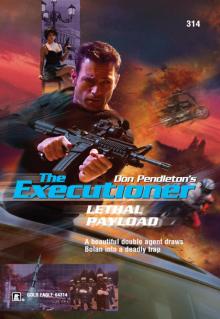 Lethal Payload
Lethal Payload Boston Blitz
Boston Blitz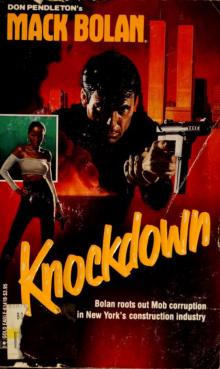 Knockdown
Knockdown Blood Sport te-46
Blood Sport te-46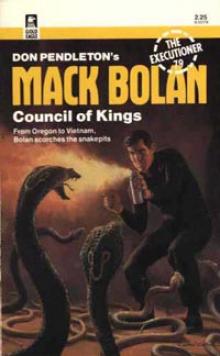 Council of Kings te-79
Council of Kings te-79 Terrorist Dispatch (Executioner)
Terrorist Dispatch (Executioner)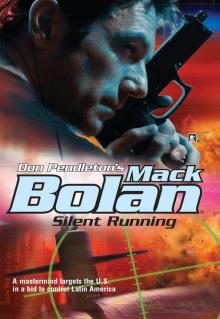 Silent Running
Silent Running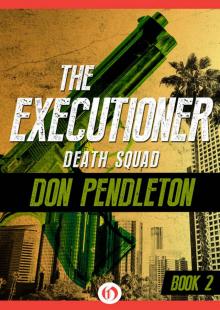 Death Squad
Death Squad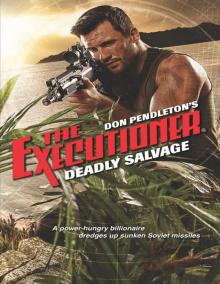 Deadly Salvage
Deadly Salvage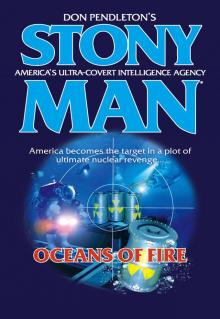 Oceans of Fire
Oceans of Fire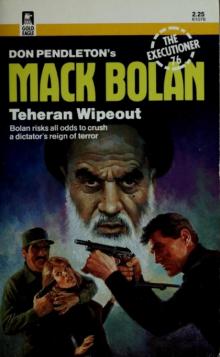 Teheran Wipeout
Teheran Wipeout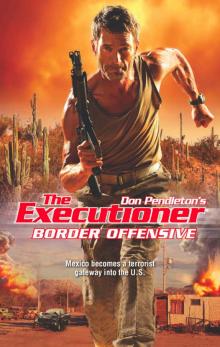 Border Offensive
Border Offensive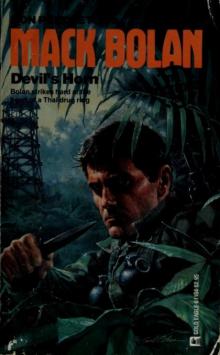 Devil's Horn
Devil's Horn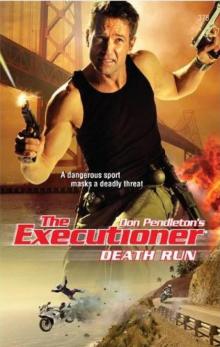 Death Run
Death Run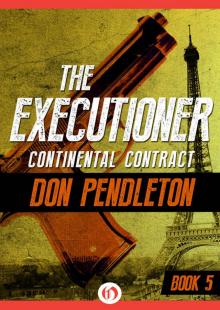 Continental Contract
Continental Contract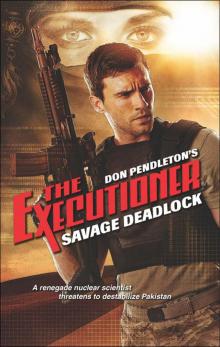 Savage Deadlock
Savage Deadlock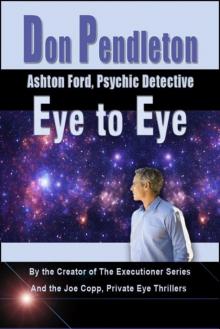 Eye to Eye: Ashton Ford, Psychic Detective
Eye to Eye: Ashton Ford, Psychic Detective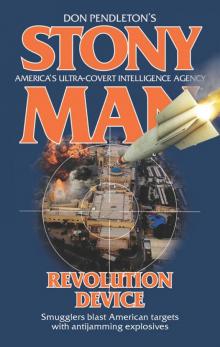 Revolution Device
Revolution Device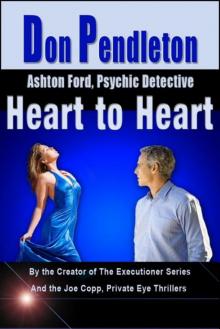 Heart to Heart: Ashton Ford, Psychic Detective
Heart to Heart: Ashton Ford, Psychic Detective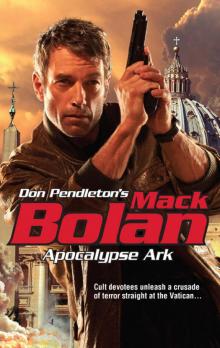 Apocalypse Ark
Apocalypse Ark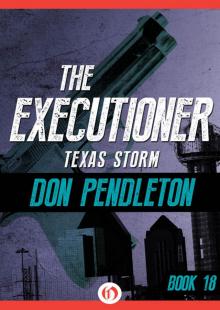 Texas Storm
Texas Storm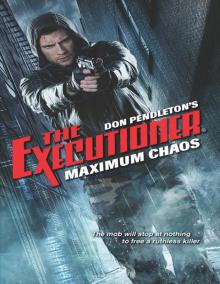 Maximum Chaos
Maximum Chaos Sensor Sweep
Sensor Sweep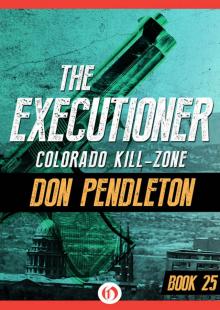 Colorado Kill-Zone
Colorado Kill-Zone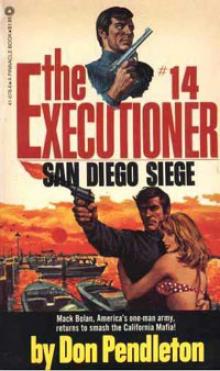 San Diego Siege te-14
San Diego Siege te-14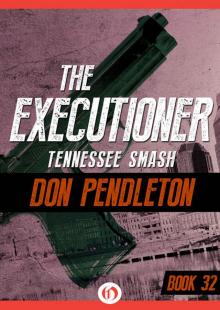 Tennessee Smash
Tennessee Smash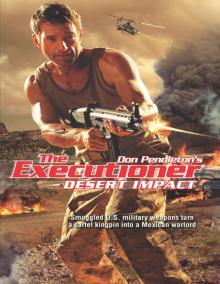 Desert Impact
Desert Impact Fire in the Sky
Fire in the Sky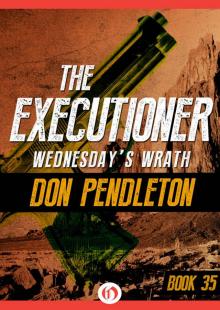 Wednesday’s Wrath
Wednesday’s Wrath Super Bolan - 001 - Stony Man Doctrine
Super Bolan - 001 - Stony Man Doctrine Chain Reaction
Chain Reaction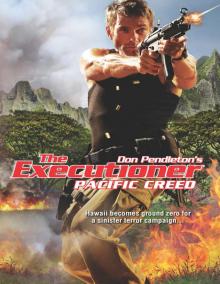 Pacific Creed
Pacific Creed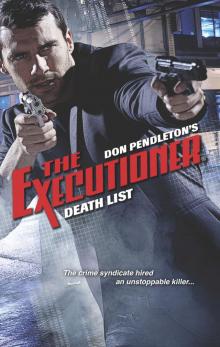 Death List
Death List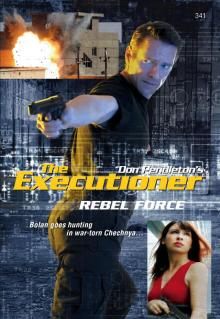 Rebel Force
Rebel Force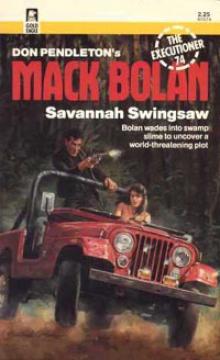 Savannah Swingsaw te-74
Savannah Swingsaw te-74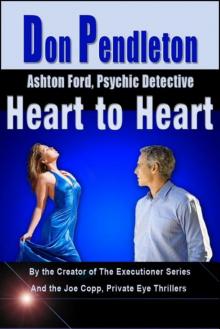 Heart to Heart
Heart to Heart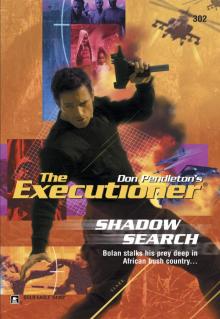 Shadow Search
Shadow Search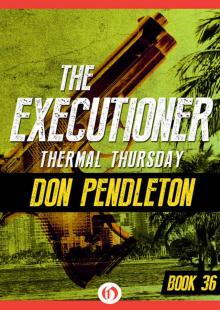 Thermal Thursday
Thermal Thursday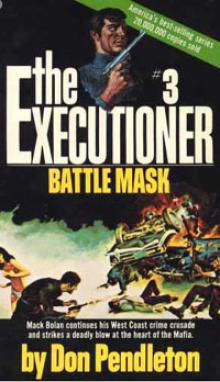 Battle Mask te-3
Battle Mask te-3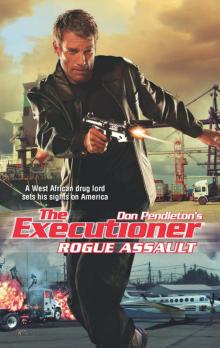 Rogue Assault
Rogue Assault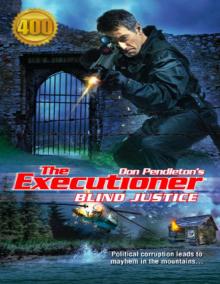 Blind Justice
Blind Justice Cold Fusion
Cold Fusion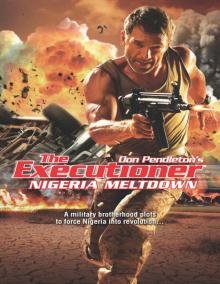 Nigeria Meltdown
Nigeria Meltdown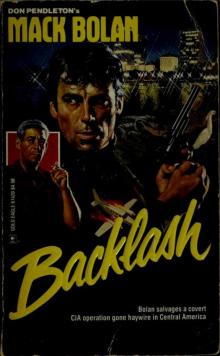 Backlash
Backlash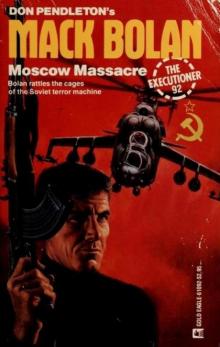 Moscow Massacre
Moscow Massacre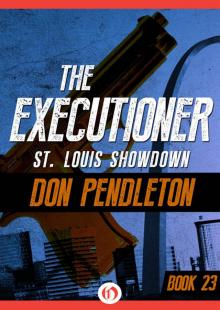 St. Louis Showdown
St. Louis Showdown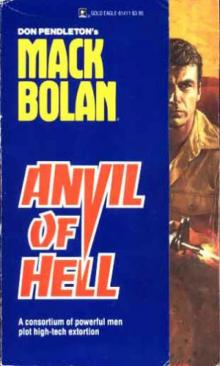 Anvil of Hell
Anvil of Hell Life to Life: Ashton Ford, Psychic Detective
Life to Life: Ashton Ford, Psychic Detective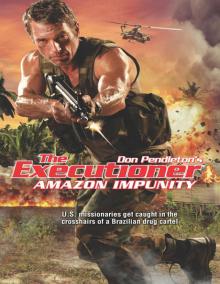 Amazon Impunity
Amazon Impunity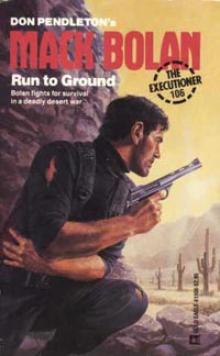 Run to Ground te-106
Run to Ground te-106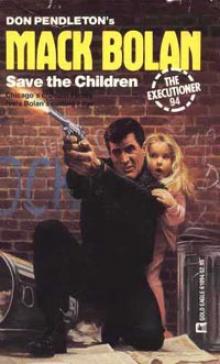 Save the Children te-94
Save the Children te-94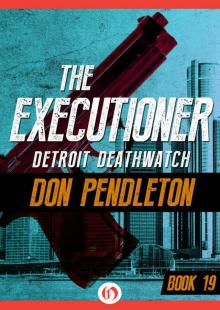 Detroit Deathwatch
Detroit Deathwatch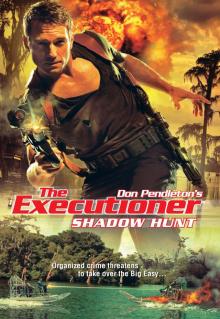 Shadow Hunt
Shadow Hunt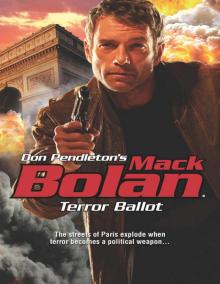 Terror Ballot
Terror Ballot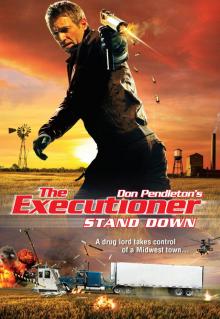 Stand Down
Stand Down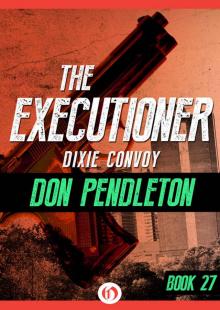 Dixie Convoy
Dixie Convoy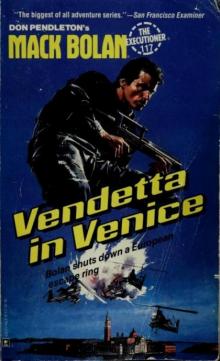 Vendetta in Venice
Vendetta in Venice War Against the Mafia
War Against the Mafia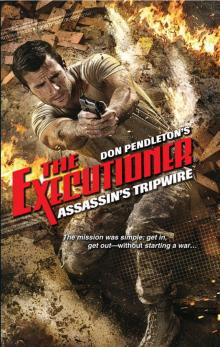 Assassin's Tripwire
Assassin's Tripwire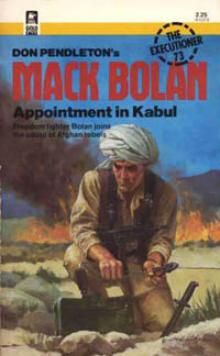 Appointment in Kabul te-73
Appointment in Kabul te-73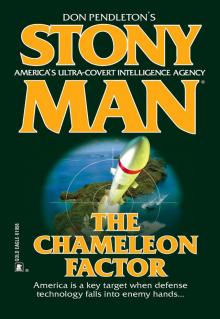 The Chameleon Factor
The Chameleon Factor Pirate Offensive
Pirate Offensive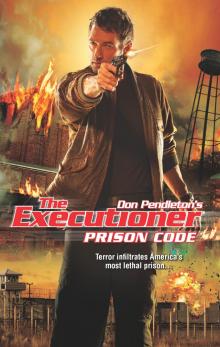 Prison Code
Prison Code Firebase Seattle te-21
Firebase Seattle te-21 Ground Zero
Ground Zero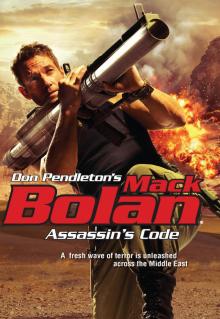 Assassin's Code
Assassin's Code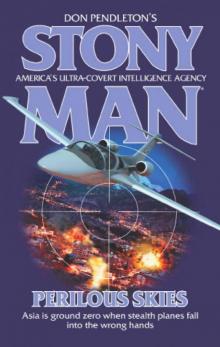 Perilous Skies (Stony Man)
Perilous Skies (Stony Man) Toxic Terrain
Toxic Terrain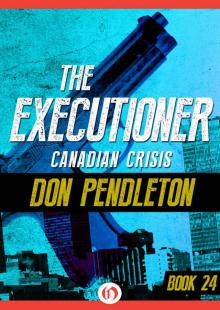 Canadian Crisis
Canadian Crisis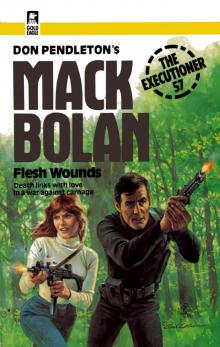 Executioner 057 - Flesh Wounds
Executioner 057 - Flesh Wounds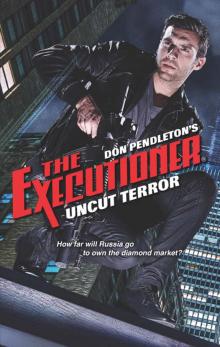 Uncut Terror
Uncut Terror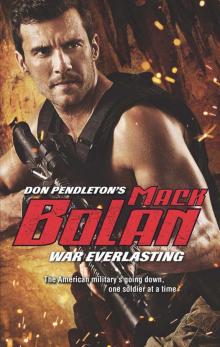 War Everlasting (Superbolan)
War Everlasting (Superbolan)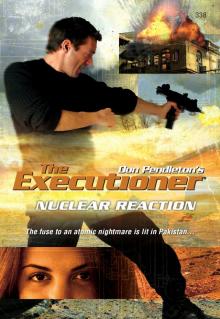 Nuclear Reaction
Nuclear Reaction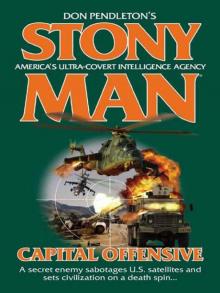 Capital Offensive (Stony Man)
Capital Offensive (Stony Man) Beirut Payback te-67
Beirut Payback te-67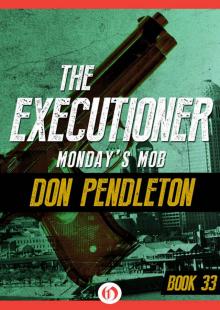 Monday’s Mob
Monday’s Mob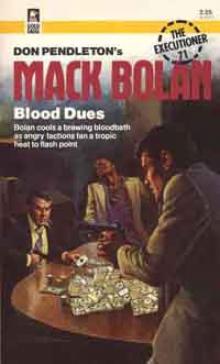 Blood Dues te-71
Blood Dues te-71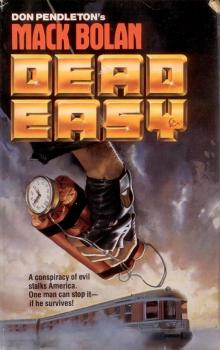 Dead Easy
Dead Easy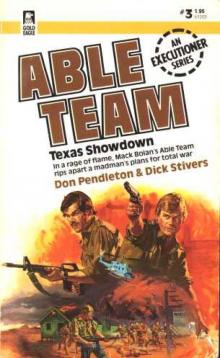 Texas Showdown at-3
Texas Showdown at-3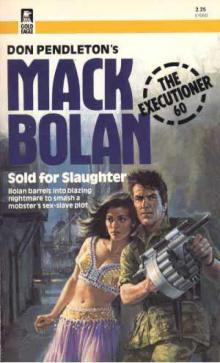 Sold for Slaughter
Sold for Slaughter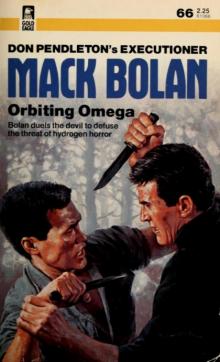 Orbiting Omega
Orbiting Omega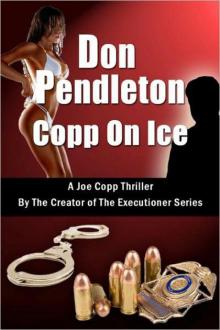 Copp On Ice, A Joe Copp Thriller (Joe Copp Private Eye Series)
Copp On Ice, A Joe Copp Thriller (Joe Copp Private Eye Series) Rebel Blast
Rebel Blast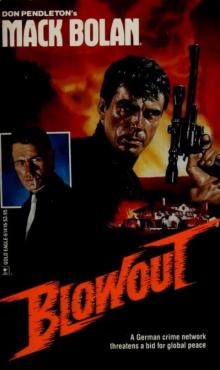 Blowout
Blowout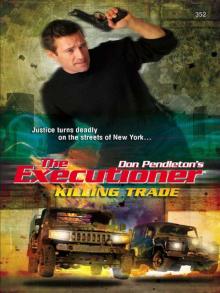 Killing Trade
Killing Trade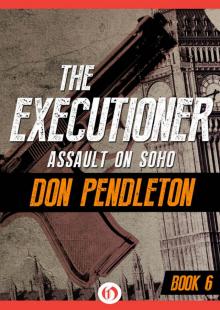 Assault on Soho
Assault on Soho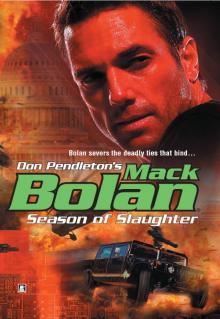 Season of Slaughter
Season of Slaughter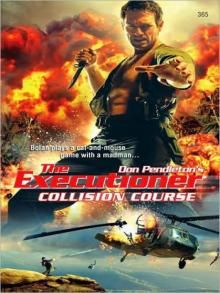 Collision Course
Collision Course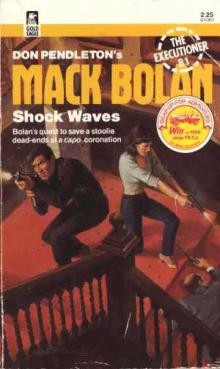 Shock Waves
Shock Waves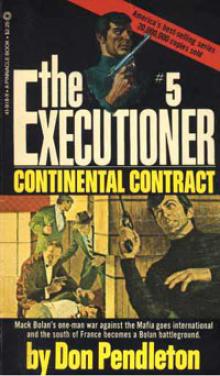 Continental Contract te-5
Continental Contract te-5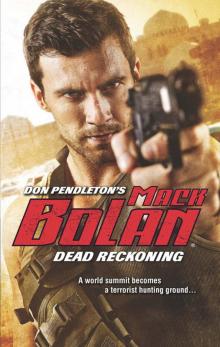 Dead Reckoning
Dead Reckoning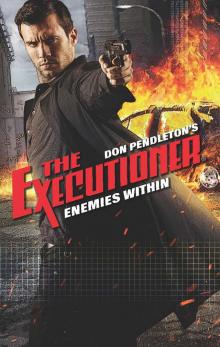 Enemies Within
Enemies Within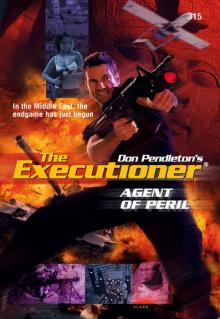 Agent of Peril
Agent of Peril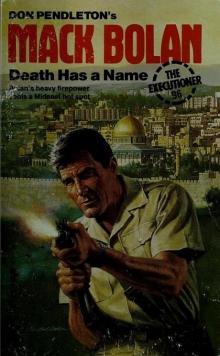 Death Has a Name
Death Has a Name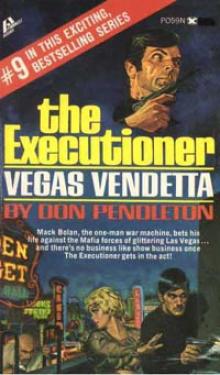 Vegas Vendetta te-9
Vegas Vendetta te-9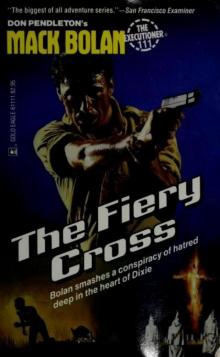 The Fiery Cross
The Fiery Cross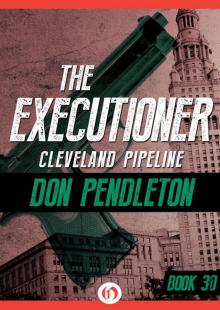 Cleveland Pipeline
Cleveland Pipeline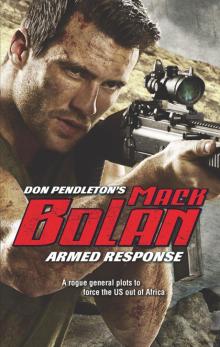 Armed Response
Armed Response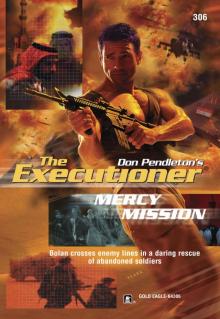 Mercy Mission
Mercy Mission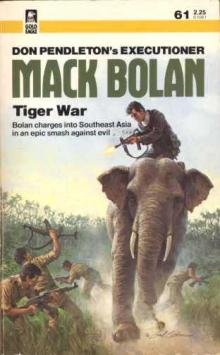 Tiger War te-61
Tiger War te-61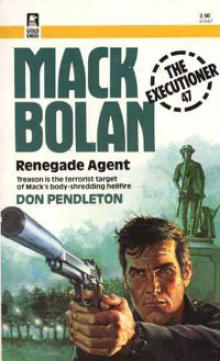 Renegade Agent te-47
Renegade Agent te-47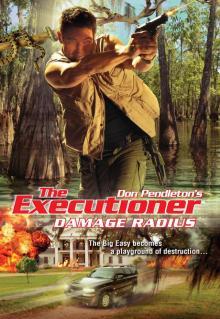 Damage Radius
Damage Radius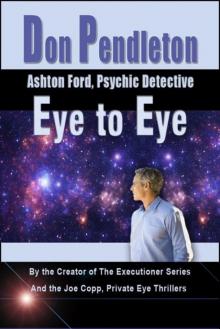 Eye to Eye
Eye to Eye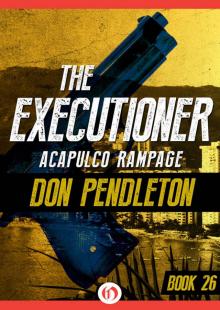 Acapulco Rampage
Acapulco Rampage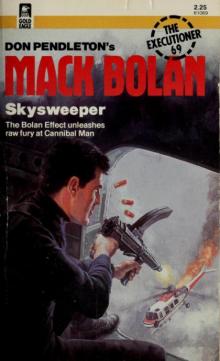 Skysweeper
Skysweeper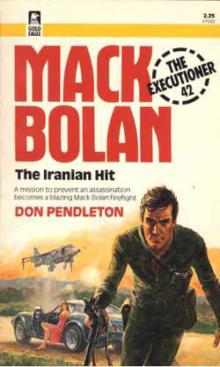 The Iranian Hit te-42
The Iranian Hit te-42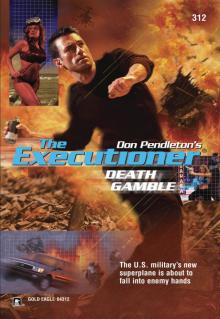 Death Gamble
Death Gamble Rebel Trade
Rebel Trade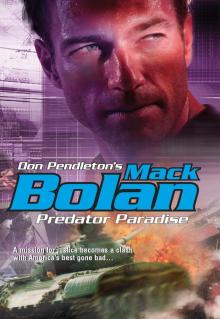 Predator Paradise
Predator Paradise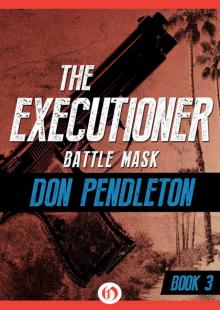 Battle Mask
Battle Mask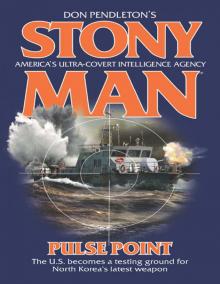 Pulse Point
Pulse Point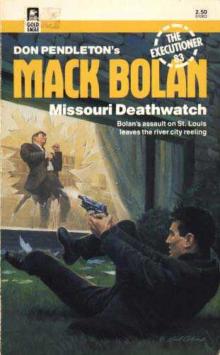 Missouri Deathwatch
Missouri Deathwatch Blood Tide
Blood Tide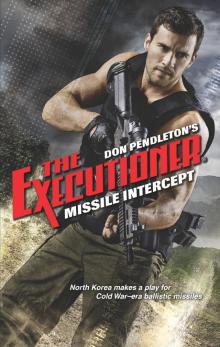 Missile Intercept
Missile Intercept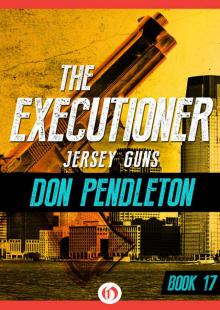 Jersey Guns
Jersey Guns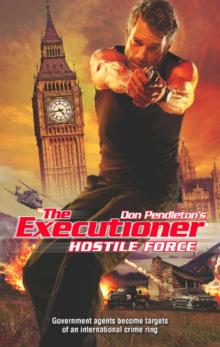 Hostile Force
Hostile Force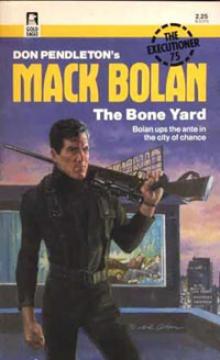 The Bone Yard te-75
The Bone Yard te-75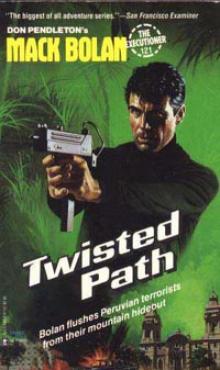 Twisted Path te-121
Twisted Path te-121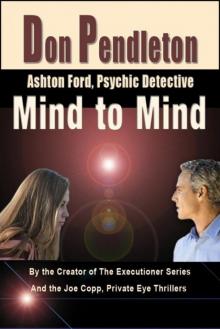 Mind to Mind
Mind to Mind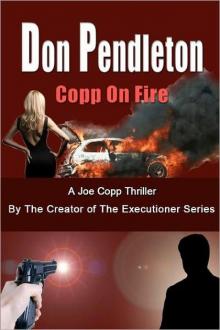 Copp On Fire, A Joe Copp Thriller (Joe Copp, Private Eye Series)
Copp On Fire, A Joe Copp Thriller (Joe Copp, Private Eye Series)